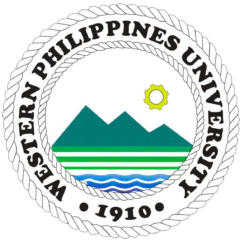![]()
Author/s: Floredel Dangan-Galon1*, Roger G. Dolorosa2 and Renalyn O. Seguerra1
1Palawan State University- Marine Science Laboratory, Tiniguiban, Puerto Princesa City, Palawan, Philippines,
2College of Fisheries and Aquatic Sciences, Western Philippines University, Puerto Princesa Campus, Palawan, Philippines
*Correspondence: fgalon@psu.palawan.edu.ph | Download Full Paper
Journal Issue: The Palawan Scientist, Volume 13(2), December 2021, pp. 1-12
ABSTRACT
This study aims to quantify mangrove leaf litter’s contribution to the Iwahig River estuary ecosystem’s primary productivity in Puerto Princesa Bay, Palawan, Philippines. There are several studies of this nature in the Indo-west Pacific and Malesian regions, but none, so far, in the island province of Palawan. A sampling protocol using the net traps was employed, and the dry leaf production in gram dry-weight per sq. m per day (g DW m-2 d-1) was computed. The amount of calculated mangrove leaf litter was at 2.34 ± 0.42 g DW m-2 d- 1 of which 49.6% was from the species Lumnitzera littorea (Jack) Voigt. The contribution of five other species, Rhizophora mucronata (Lamk.), Rhizophora apiculata Bl., Xylocarpus granatum König, Bruguiera sexangula (Lour.) Poir., and Xylocarpus moluccensis (Lamk.) Roem came in varying quantities. The seasonal variability was evident, but this did not differ significantly between the rainy (1.48 ± 0.3 g DW m-2 d-1) and the dry (2.12 ± 1.0 g DW m-2 d-1) seasons with a P-value of 0.432 (α = 0.99). None of the four environmental parameters (temperature, rainfall, wind speed and day lengths) correlated well with the average monthly leaf litter production. Nonetheless, the computed value for this is high and can be associated with the Iwahig River estuary ecosystem’s high biodiversity. A year-round assessment, with the inclusion of relevant variables such as tides, nutrients, species density, and diameter-at-breast-height (DBH), should be done. Understanding the inter-annual variability in mangrove leaf litter production and its contribution to the Iwahig River estuary ecosystem in Palawan, the Philippines, are imperative.
Keywords: dry weight, litterfall, productivity, species, variability

This work is licensed under a Creative Commons Attribution-NonCommercial 4.0 International License
| Download Full Paper 267 Downloads |
